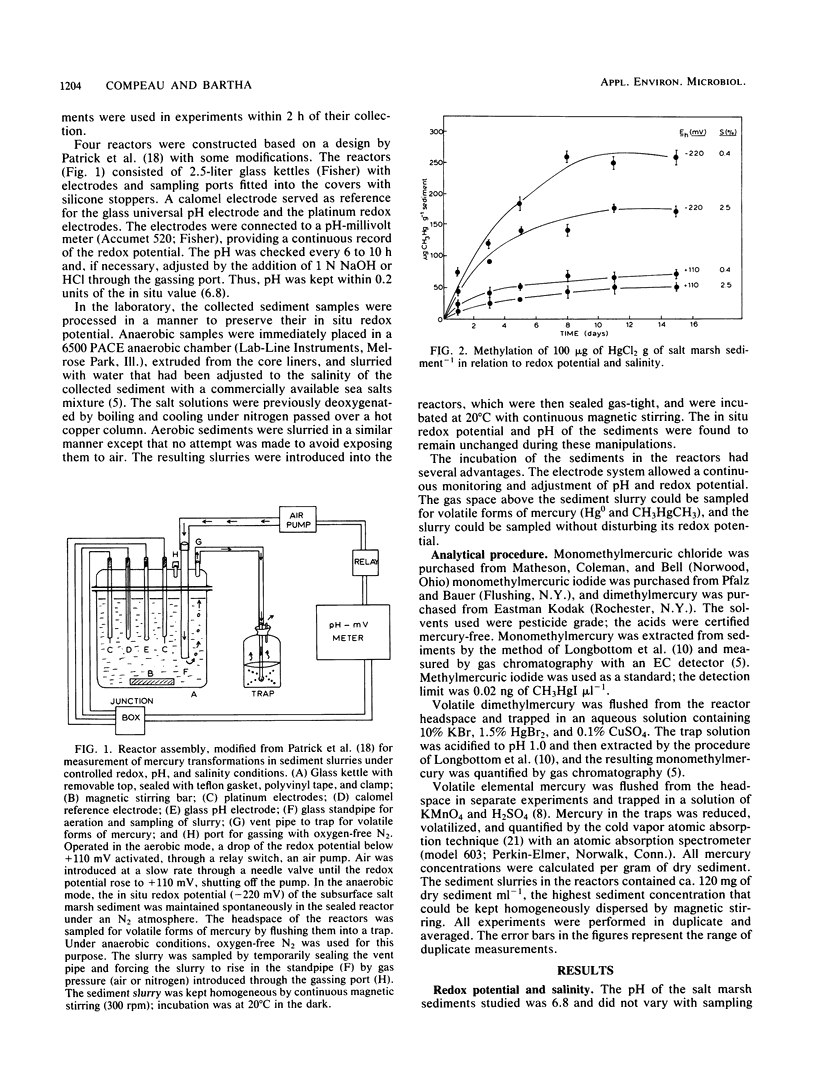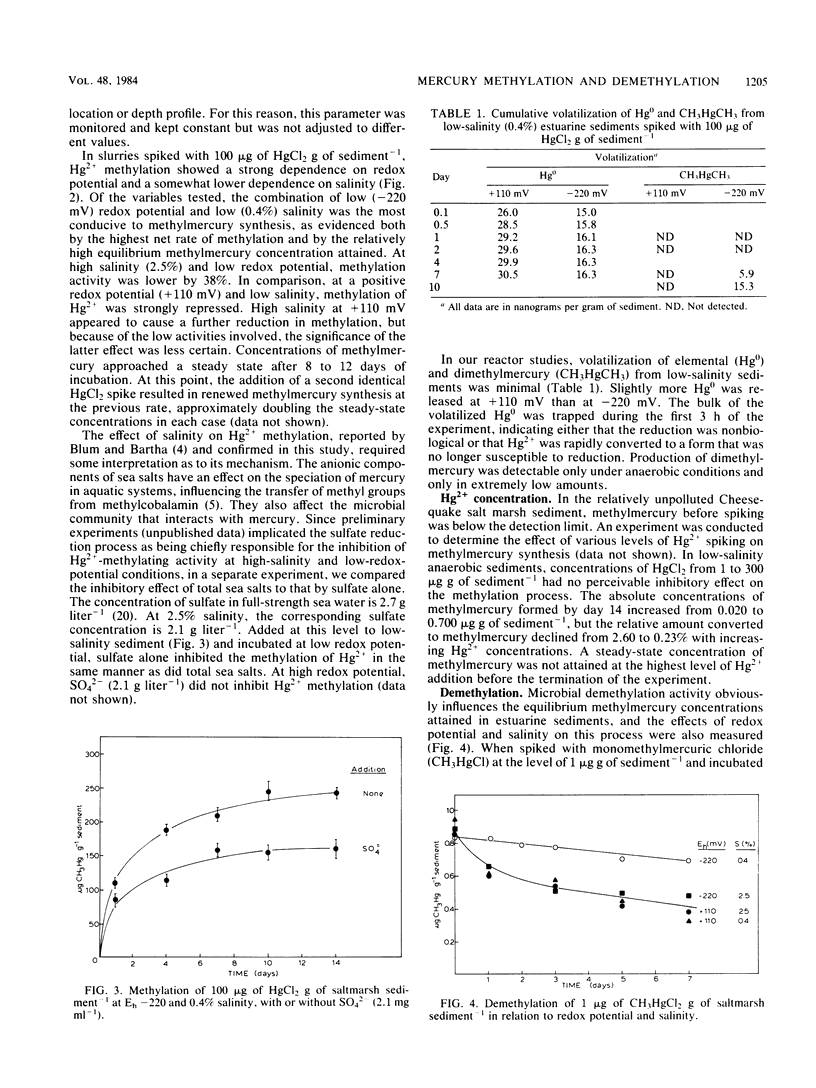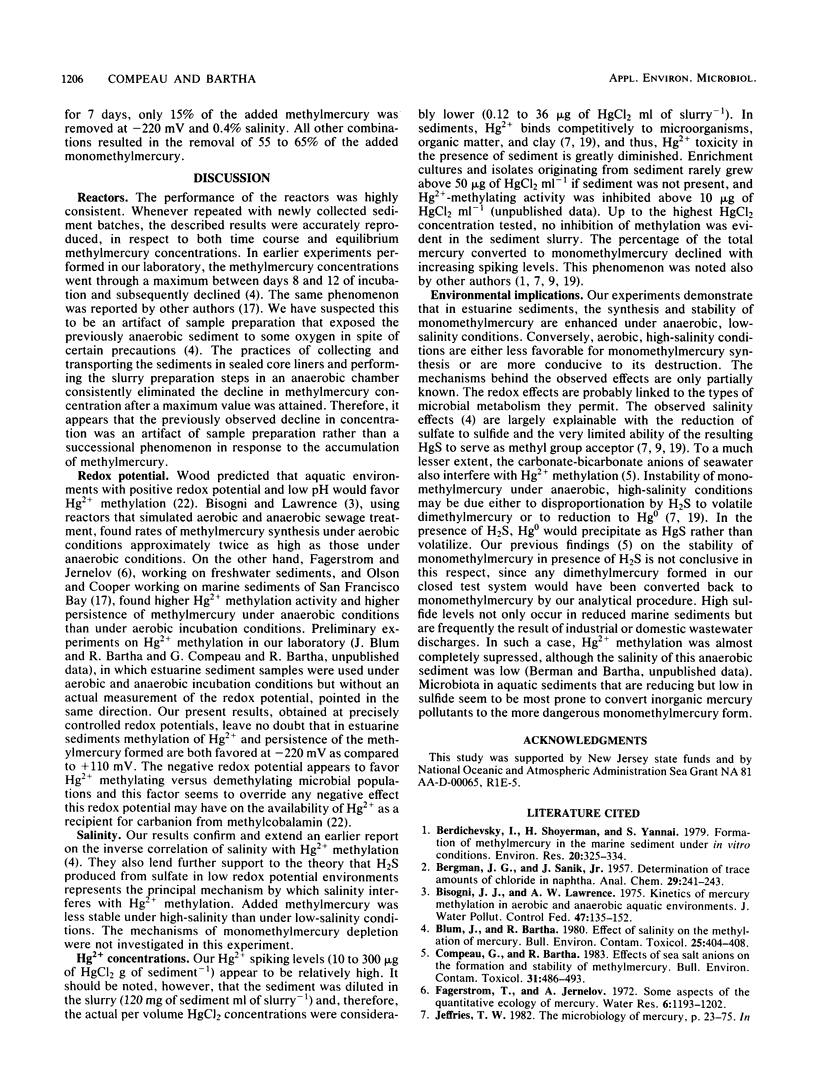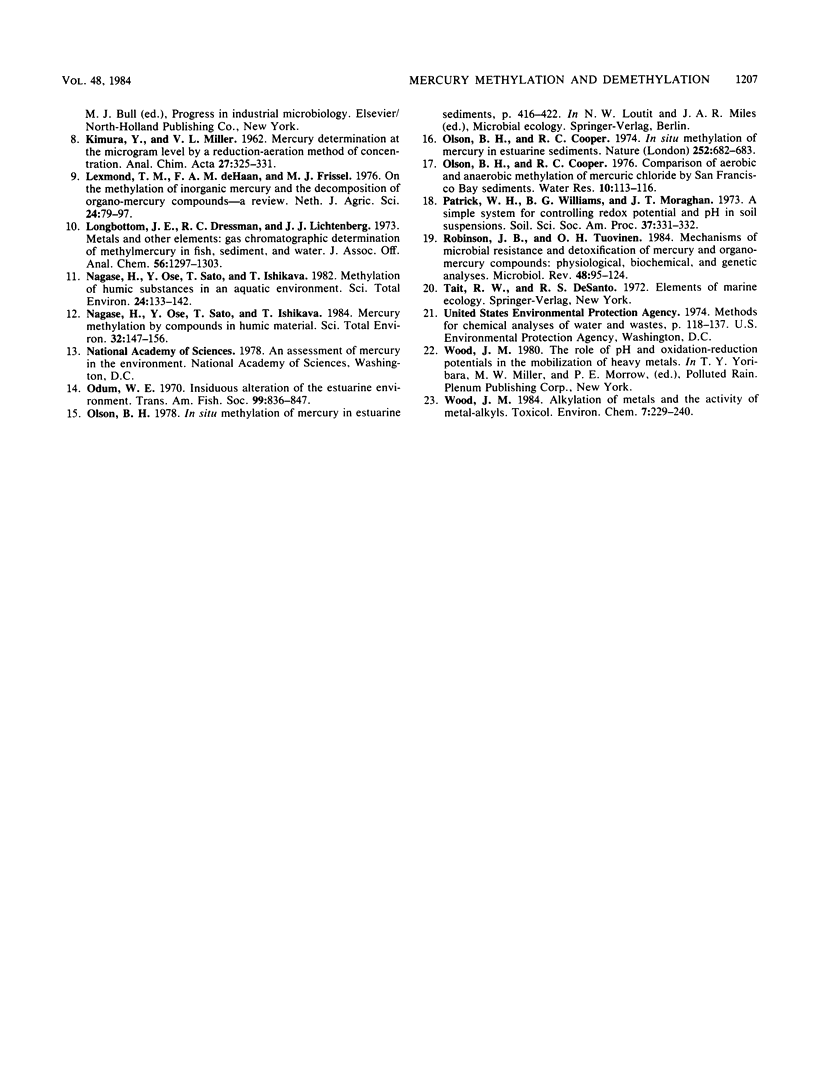Abstract
In estuarine sediments, the microbially mediated processes of methylation, demethylation, and volatilization determine the state and overall toxicity of mercury pollutants. The effects of redox potential (Eh) and salinity on the above microbial processes were investigated in reactors constructed to allow for continuous monitoring and adjustment of the pH (6.8) and Eh of freshly collected estuarine sediments. For measurements of methylation and demethylation activity, sediment slurries adjusted to appropriate salinity were spiked with HgCl2 or CH3HgCl, respectively, and were incubated in the reactors. Methylmercury was measured by gas chromatography. Volatilized elemental mercury (Hg0) was trapped and determined by cold vapor atomic absorption spectrometry. Volatilization of Hg0 and CH3HgCH3 were found to be minimal. Methylation of Hg2+ was favored at Eh-220 mV as compared to +110 mV. At -220 mV, high salinity (2.5%) inhibited methylation, and low salinity (0.4%) favored it. At +110 mV, the salinity effect was less pronounced. Demethylation of CH3HgCl was favored at +110 mV regardless of the salinity level. Low redox potential under low salinity conditions inhibited demethylation, but high salinity reversed this inhibition. These findings are helpful for interpreting and predicting the behavior of mercury pollutants in estuarine sediments.
Full text
PDF




Selected References
These references are in PubMed. This may not be the complete list of references from this article.
- Berdicevsky I., Shoyerman H., Yannai S. Formation of methylmercury in the marine sediment under in vitro conditions. Environ Res. 1979 Dec;20(2):325–334. doi: 10.1016/0013-9351(79)90008-2. [DOI] [PubMed] [Google Scholar]
- Bisogni J. J., Jr, Lawrence A. W. Kinetics of mercury methylation in aerobic and anaerobic aquatic environments. J Water Pollut Control Fed. 1975 Jan;47(1):135–152. [PubMed] [Google Scholar]
- Blum J. E., Bartha R. Effect of salinity on methylation of mercury. Bull Environ Contam Toxicol. 1980 Sep;25(3):404–408. doi: 10.1007/BF01985546. [DOI] [PubMed] [Google Scholar]
- Compeau G., Bartha R. Effects of sea salt anions on the formation and stability of methylmercury. Bull Environ Contam Toxicol. 1983 Oct;31(4):486–493. doi: 10.1007/BF01622282. [DOI] [PubMed] [Google Scholar]
- Robinson J. B., Tuovinen O. H. Mechanisms of microbial resistance and detoxification of mercury and organomercury compounds: physiological, biochemical, and genetic analyses. Microbiol Rev. 1984 Jun;48(2):95–124. doi: 10.1128/mr.48.2.95-124.1984. [DOI] [PMC free article] [PubMed] [Google Scholar]


